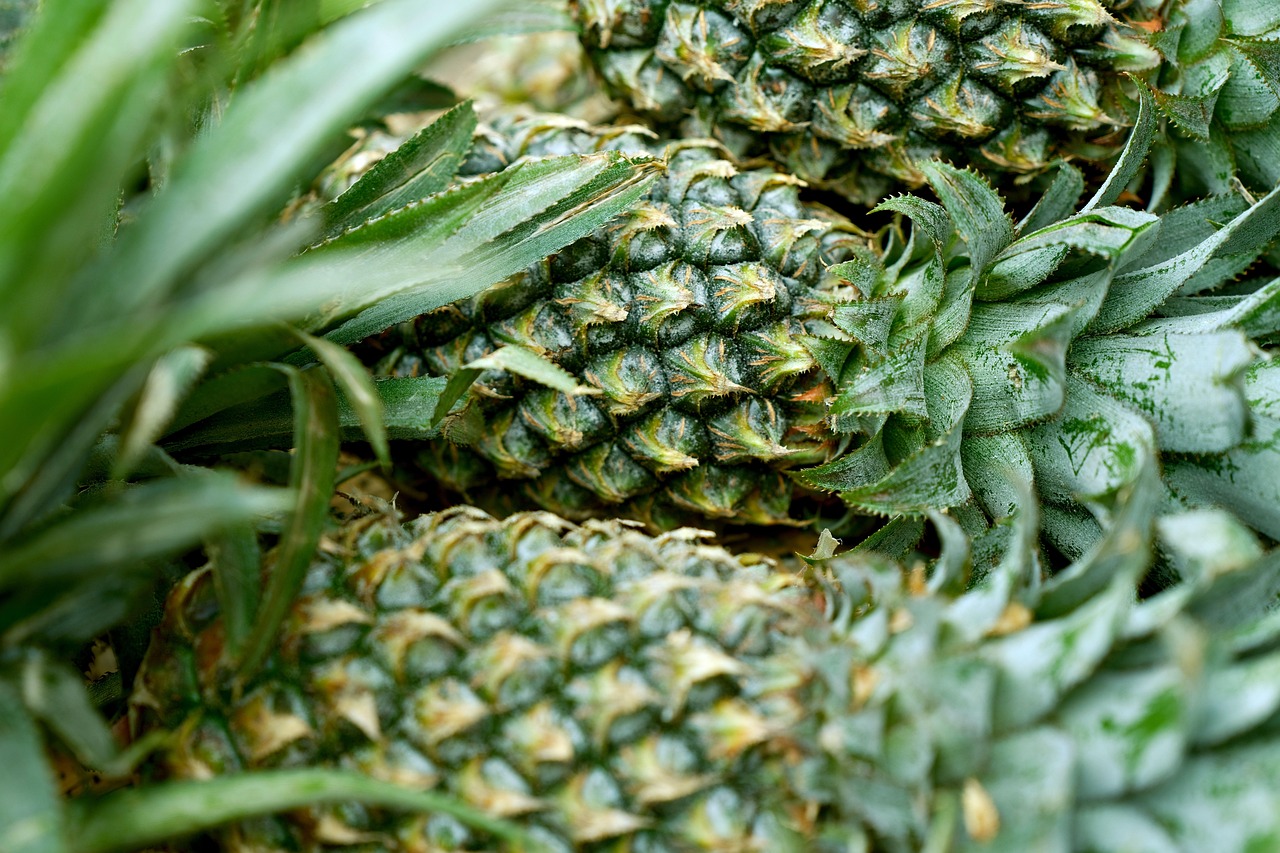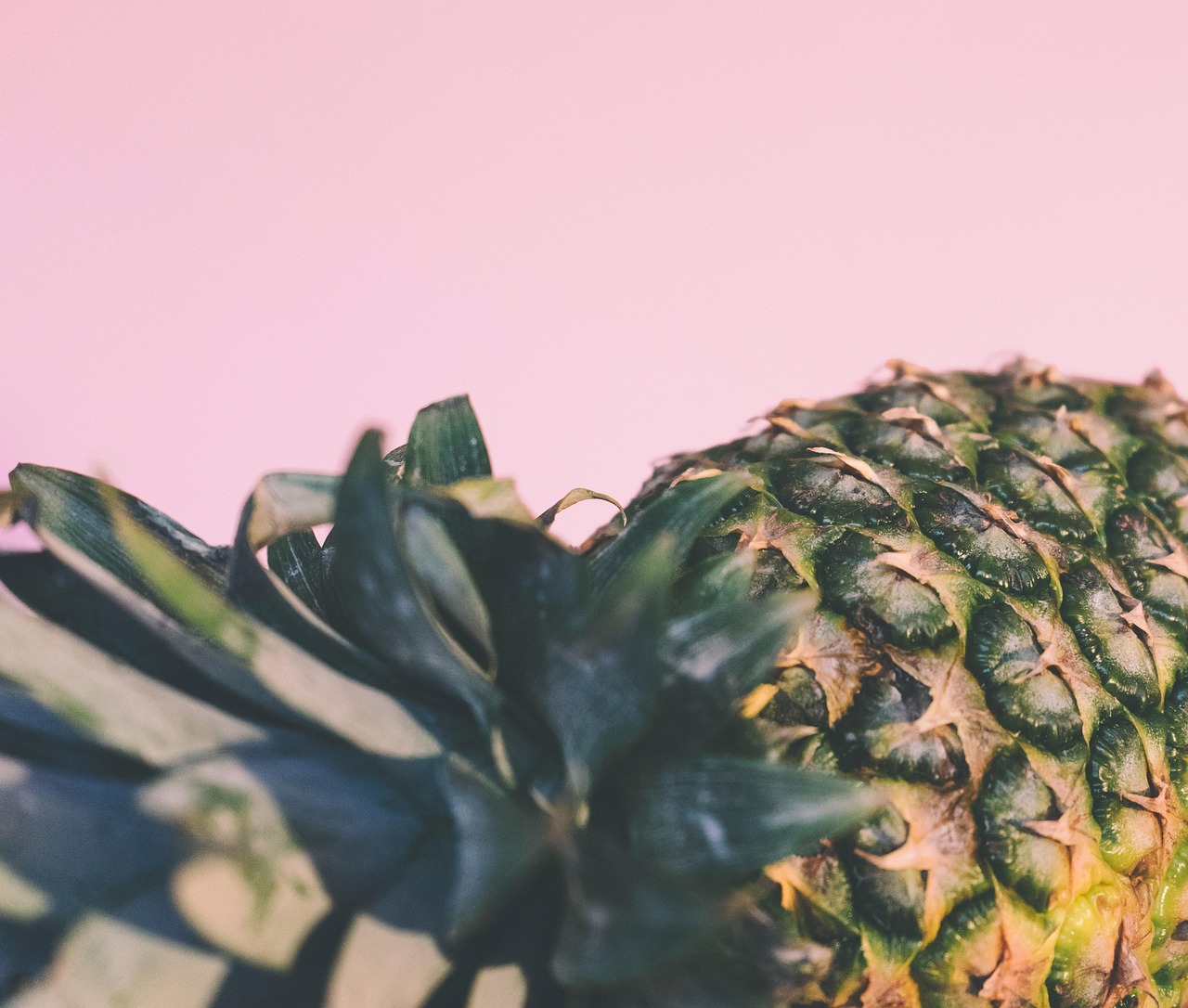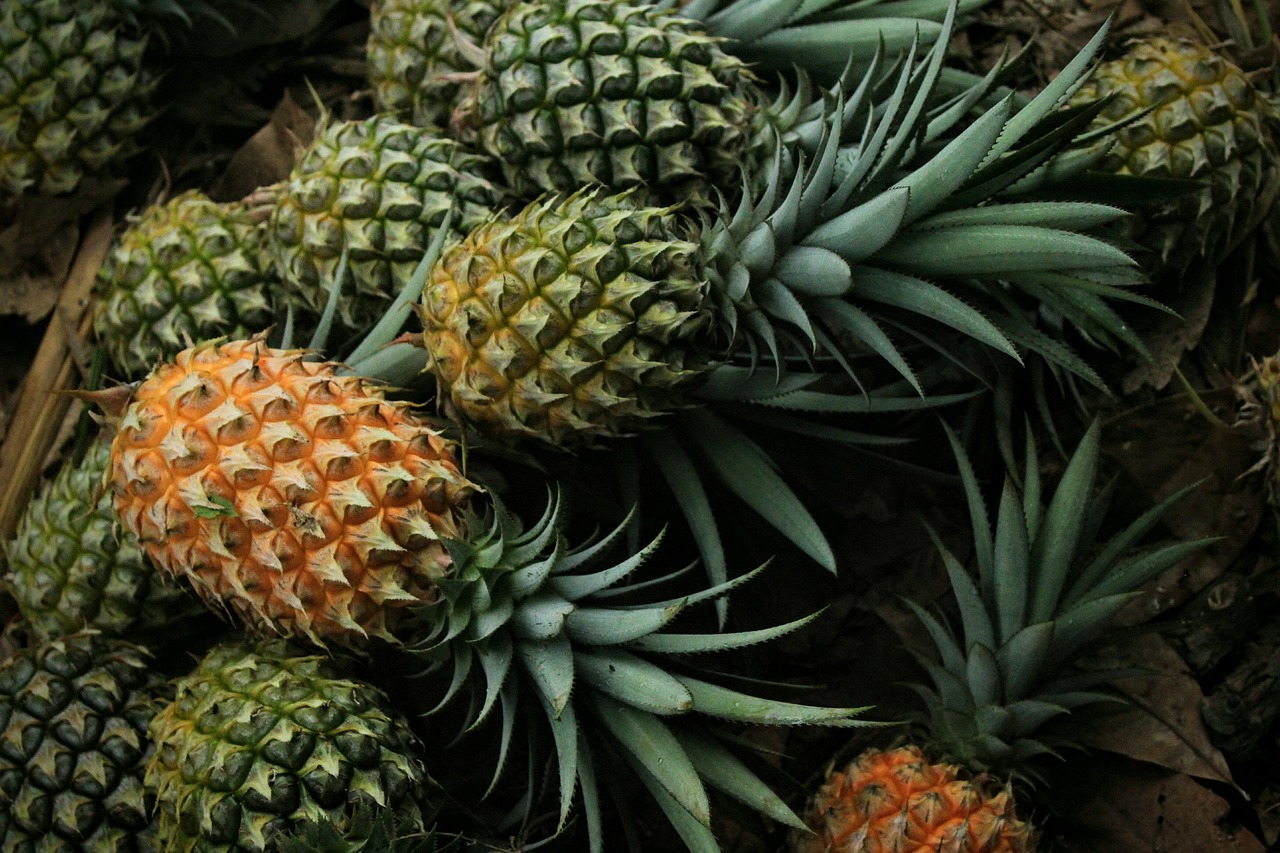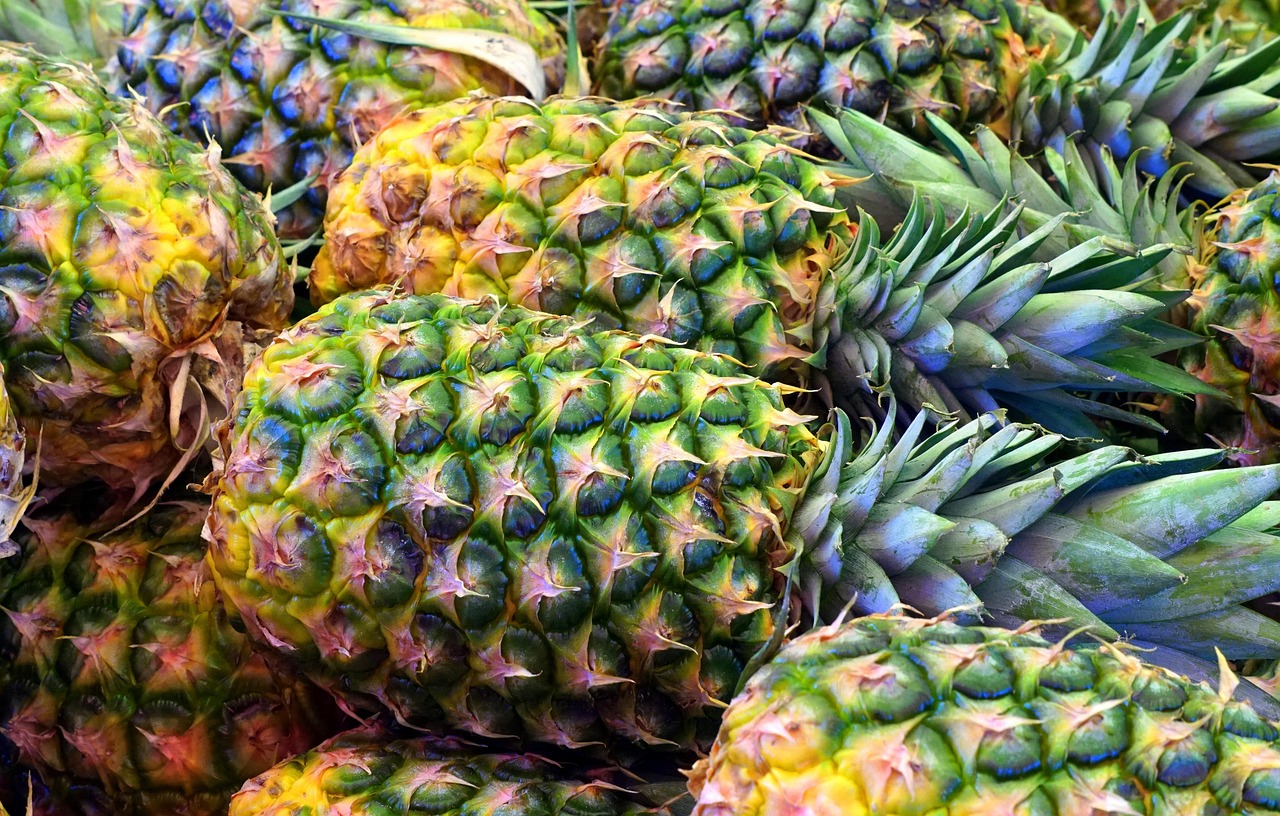Pink pineapples are a unique variety of pineapple known for their sweet flavor and striking pink color. This cultivar, scientifically named Ananas comosus var. bracteatus, was developed through selective breeding and is a fun addition to any garden or fruit collection.
Understanding Pink Pineapples
The pink pineapple, a relatively new addition to the world of fruit cultivation, has gained popularity for both its aesthetic appeal and its taste. Originally created by the company Del Monte Fresh Produce, these pineapples were designed to be sweeter and more colorful than traditional varieties. The pink hue comes from the presence of lycopene, a natural pigment also found in tomatoes and watermelon. This pigment not only gives the fruit its distinctive color but also contributes to its health benefits.

Unlike standard pineapples, which are typically yellow or golden, pink pineapples offer a delightful twist to the classic fruit experience. They can be used in various culinary applications, from fruit salads to cocktails, adding a vibrant touch to any dish. Furthermore, they have become a favorite among home gardeners looking to grow something unique.
Growing and caring for pink pineapples may seem daunting at first, but with the right knowledge and techniques, it can be a rewarding endeavor. Below, we will outline essential information about this tropical fruit, including its growing requirements, care tips, and potential benefits.
Key Characteristics of Pink Pineapples
| Characteristic | Description |
|---|---|
| Color | Vibrant pink skin with golden-yellow flesh. |
| Taste | Sweet flavor with a hint of tropical tartness. |
| Size | Similar in size to conventional pineapples, typically weighing around 2-3 pounds. |
| Variety | Ananas comosus var. bracteatus. |
| Ripening Time | Approximately 18-24 months from planting to harvest. |
Growing Conditions for Pink Pineapples
To successfully grow pink pineapples, it’s essential to provide the right conditions. Here are some key factors to consider:

- Climate: Pink pineapples thrive in warm climates with temperatures ranging from 65°F to 95°F (18°C to 35°C). They are not frost-tolerant, so it’s vital to protect them in cooler weather.
- Soil: Well-draining soil is crucial for healthy pineapple growth. A sandy loam or potting mix with good drainage works best.
- Sunlight: These plants require full sun for optimal growth. Aim for at least six hours of direct sunlight per day.
- Watering: Water the plants regularly but avoid overwatering. Allow the soil to dry out between watering sessions.
Understanding these requirements is vital for ensuring your pink pineapple plants remain healthy and productive. Proper care will lead to vibrant fruit that is not only visually appealing but also delicious.
Caring for Pink Pineapples
Caring for pink pineapples involves several key practices that promote growth and fruit development. Here are some tips to keep your plants thriving:
- Fertilization: Use a balanced fertilizer every couple of months during the growing season. This will provide the necessary nutrients for strong growth and fruit production.
- Pest Management: Monitor your plants for pests such as mealybugs and aphids. If detected, use insecticidal soap or neem oil as a natural remedy to control infestations.
- Pruning: Remove any dead or damaged leaves regularly to encourage airflow and prevent disease.
With the right care and attention, growing pink pineapples can be an enjoyable and fruitful experience, adding beauty and flavor to your garden or home. As you continue reading, you will discover more about the benefits and uses of this delightful fruit.

Health Benefits of Pink Pineapples
Pink pineapples are not only visually appealing but also packed with nutrients that contribute to good health. Here are some of the notable health benefits associated with consuming pink pineapples:
- Rich in Vitamins: Pink pineapples are an excellent source of vitamin C, which boosts the immune system and promotes skin health.
- Antioxidant Properties: The presence of lycopene gives pink pineapples powerful antioxidant properties. Antioxidants help combat oxidative stress and reduce the risk of chronic diseases.
- Digestive Health: Pineapples contain bromelain, an enzyme that aids digestion by breaking down proteins. This can help alleviate digestive issues like bloating and constipation.
- Weight Management: With low calories and high water content, pink pineapples can be a great addition to a weight management plan, providing a feeling of fullness without excess calories.
Nutritional Profile
The nutritional value of pink pineapples enhances their appeal as a healthy fruit choice. Below is a table detailing the nutritional content per 100 grams of pink pineapple:
| Nutrient | Amount |
|---|---|
| Calories | 50 |
| Protein | 0.5 g |
| Carbohydrates | 13 g |
| Fiber | 1.4 g |
| Vitamin C | 47% DV* |
| Bromelain | 79 mg |
*DV stands for Daily Value based on a 2,000-calorie diet. Your daily values may be higher or lower depending on your calorie needs.

Culinary Uses of Pink Pineapples
Pink pineapples can be used in various culinary applications due to their sweet flavor and unique color. Here are some creative ways to incorporate them into your meals:
- Fresh Fruit Salads: Dice pink pineapple and mix it with other fruits like strawberries, kiwi, and mango for a vibrant salad.
- Smoothies: Blend pink pineapple with yogurt, spinach, and other fruits for a refreshing smoothie.
- Salsas: Combine pink pineapple with diced red onion, cilantro, and lime juice for a tangy salsa that pairs well with grilled fish or chicken.
- Desserts: Use pink pineapple in tarts or as a topping for cakes and ice creams to add a burst of color and flavor.
Pairing Suggestions
The sweetness of pink pineapples pairs well with various flavors. Here are some suggestions for pairing:
- Citrus: The acidity of oranges and lemons enhances the sweetness of pink pineapples.
- Spices: Cinnamon and nutmeg can bring out the fruit’s sweetness in baked dishes.
- Herbs: Fresh mint or basil complements the tropical flavor profile of pink pineapples.
Growing Pink Pineapples Indoors
If you lack outdoor space or live in a cooler climate, growing pink pineapples indoors is a viable option. Here are some tips for indoor cultivation:
- Selecting the Right Container: Use a pot with drainage holes to prevent waterlogging. A size of at least 10-12 inches in diameter is recommended.
- Light Requirements: Place the pot near a sunny window where it can receive plenty of direct sunlight. If natural light is insufficient, consider using grow lights.
- Watering Strategy: Water when the top inch of soil feels dry. Indoor plants may require less frequent watering than outdoor ones.
With proper care, your indoor pink pineapple plant can thrive and produce fruit over time, bringing joy to your living space.
Pest Management for Indoor Plants
Pests can still affect indoor plants. Monitor your pink pineapple for common pests like spider mites or aphids. Here are some management strategies:
- Regular Inspection: Check the leaves and soil regularly for signs of pests.
- Natural Remedies: Use insecticidal soap or dilute neem oil to treat infested plants without harsh chemicals.
- Maintain Cleanliness: Keep the area around your plant clean to deter pests from settling in.
By following these guidelines, you can enjoy the beauty and flavor of pink pineapples while ensuring their health and productivity. As you cultivate your plants, you’ll discover even more about their unique characteristics and uses.
Harvesting Pink Pineapples
After investing time and effort into growing your pink pineapple, knowing when and how to harvest is essential. Typically, pink pineapples take about 18 to 24 months to mature from planting to harvest. Here are some key indicators and techniques for a successful harvest:
Signs of Ripeness
Identifying the right time to harvest ensures you enjoy the best flavor and texture. Look for the following signs:
- Color Change: The skin of the pineapple should appear a vibrant pink, with some golden-yellow tones starting to develop at the base.
- Aroma: A sweet, fruity fragrance will become noticeable as the pineapple ripens. This scent indicates that the fruit is ready to be picked.
- Firmness: Gently squeeze the fruit. A ripe pineapple will have a slight give, indicating it is ready to eat.
Harvesting Technique
When you determine that your pink pineapple is ripe, follow these steps for harvesting:
- Gather Tools: Use a sharp knife or pruning shears to cut the pineapple from the plant.
- Cutting Method: Cut the pineapple close to the base, ensuring you leave some of the base attached to the fruit. This helps preserve its freshness.
- Avoid Damage: Be careful not to damage the surrounding leaves or plant while harvesting.
Once harvested, pink pineapples can be enjoyed fresh or stored for later use. They can last for several days at room temperature or up to one week in the refrigerator.
Storing Pink Pineapples
Proper storage of pink pineapples is crucial to maintaining their flavor and freshness. Here are some tips on how to store them effectively:
- Room Temperature: If you’ve just harvested your pineapple, you can store it at room temperature for 1-2 days to allow it to fully ripen.
- Refrigeration: For longer storage, place uncut pineapples in the refrigerator. They can last up to one week when properly stored.
- Cuts or Slices: If you cut the pineapple, store the pieces in an airtight container in the refrigerator. They will stay fresh for about 3-5 days.
Freezing Pink Pineapples
If you want to extend the shelf life of your pink pineapples even further, consider freezing them. Follow these steps:
- Preparation: Peel and core the pineapple, then cut it into bite-sized pieces.
- Blanching (optional): Blanching can help retain flavor and color. Briefly immerse the pieces in boiling water for about 1-2 minutes, then transfer them immediately to ice water.
- Freezing: Spread the pieces on a baking sheet in a single layer and freeze until solid. Once frozen, transfer them to freezer bags or containers for long-term storage.
Frozen pink pineapples can be used in smoothies, desserts, or as toppings for various dishes, making them versatile and convenient for later use.
Culinary Inspirations with Pink Pineapples
Once you have harvested and stored your pink pineapples, you may want to explore creative culinary uses. Here are some inspiring ideas:
Refreshing Beverages
Pink pineapples can elevate beverages with their unique flavor and vibrant color:
- Pineapple Juice: Blend fresh pink pineapple with water and strain it for a refreshing juice.
- Cocktails: Use pink pineapple juice in tropical cocktails such as piña coladas or as a base for fruity sangrias.
- Smoothie Bowls: Blend pink pineapple with yogurt and top with granola, nuts, and other fruits for a nutritious breakfast bowl.
Savory Dishes
The sweetness of pink pineapples pairs well with savory ingredients:
- Pineapple Fried Rice: Add diced pink pineapple to fried rice along with vegetables and protein for a delightful twist.
- Pizza Topping: Use pink pineapple chunks on pizza with ham or bacon for a sweet and savory combination.
- Curry Dishes: Incorporate pink pineapple into curry recipes for an added layer of sweetness and acidity.
Cultural Significance of Pineapples
Pineapples hold cultural significance in various societies around the world. Historically, they have symbolized hospitality and warmth due to their exotic appearance and sweet flavor. In many cultures, offering a pineapple has been a way to convey welcome and friendship.
In addition, pink pineapples have attracted attention not only for their unique color but also for their innovative genetic modification process. This has sparked discussions about agriculture’s role in sustainability and food production techniques.
As you explore the world of pink pineapples, you’ll find that they are more than just a delicious fruit; they are a symbol of creativity in gardening and culinary arts.
Environmental Impact of Pink Pineapples
As the popularity of pink pineapples grows, so does the conversation around their environmental impact. Understanding how these fruits are cultivated and their effects on ecosystems is essential for sustainable gardening practices.
The cultivation of pink pineapples involves several agricultural practices that can influence the environment:
- Water Usage: Pineapple plants require a significant amount of water, especially in dry climates. Sustainable water management practices are essential to prevent depletion of local water resources.
- Pesticide Use: Conventional pineapple farming sometimes relies on pesticides. Organic farming methods, such as integrated pest management, can reduce chemical use and promote biodiversity.
- Soil Health: Maintaining soil health is critical for pineapple production. Practices like crop rotation and organic fertilization can enhance soil quality and reduce soil erosion.
By adopting environmentally friendly practices, growers can help mitigate the negative impacts of pineapple cultivation while producing delicious fruit for consumers.
Economic Aspects of Pink Pineapples
The introduction of pink pineapples has also had economic implications. As a unique product, they have the potential to create niche markets and boost sales for growers. Here are some points to consider:
- Market Demand: The novelty of pink pineapples has created a buzz among consumers, leading to increased demand in grocery stores and specialty shops.
- Price Premium: Due to their unique color and flavor, pink pineapples often command a higher price than traditional varieties, benefiting growers.
- Export Opportunities: As consumers worldwide seek out unique and exotic fruits, there may be opportunities for exporting pink pineapples to international markets.
These economic factors not only benefit individual growers but can also contribute positively to local economies in pineapple-growing regions.
Future of Pink Pineapples
The future of pink pineapples looks promising as interest in unique fruits continues to rise. Innovations in agricultural practices and breeding could lead to even more exciting varieties in the coming years. Some potential developments include:
- Sustainable Farming Techniques: Continued advancements in sustainable agriculture may lead to more eco-friendly methods of growing pink pineapples, reducing their environmental footprint.
- Genetic Research: Ongoing research into genetic modification could produce new varieties with enhanced flavors, colors, or resistance to pests and diseases.
- Culinary Exploration: As chefs and home cooks experiment with pink pineapples, they may discover new recipes and uses that further popularize this unique fruit.
Conclusion
Pink pineapples are more than just a visually stunning addition to the fruit world; they embody a blend of creativity in agriculture and culinary arts. With their sweet flavor and vibrant color, they serve as a delightful treat that can enhance both everyday meals and special occasions.
The journey of growing and caring for pink pineapples offers valuable insights into sustainable gardening practices, emphasizing the importance of environmental stewardship. As consumers become more aware of the health benefits and culinary versatility of this unique fruit, the demand for pink pineapples is likely to increase.
As we look to the future, the ongoing exploration of pink pineapples will continue to inspire gardeners, chefs, and fruit enthusiasts alike. By embracing innovative agricultural practices and creative culinary applications, we can ensure that pink pineapples remain a cherished fruit for generations to come.
